The World Humanoid Robot Games – A 2025 Milestone in Autonomous Robotics and Real-World Integration
A New Era of Humanoid Competition in The World Humanoid Robot Games
From August 15–17, 2025, Beijing hosted the inaugural World Humanoid Robot Games (WHRG), the first global multi-sport event dedicated exclusively to humanoid robots. Held at the National Speed Skating Oval and the National Stadium, WHRG featured over 500 robots from 280 teams representing 16 countries. The event was part of the broader World Robot Conference and marked a turning point in public-facing robotics, blending athleticism, performance, and real-world service scenarios.
The Games were divided into three primary categories: athletic competitions, performance showcases, and scenario-based challenges. Each category tested different dimensions of robotic capability—from motion control and coordination to environmental awareness and autonomous decision-making. The opening ceremony featured robots performing hip-hop dance, martial arts, and live music, alongside fashion modeling and expressive movement. It was a celebration not just of engineering, but of the growing cultural presence of humanoid machines.
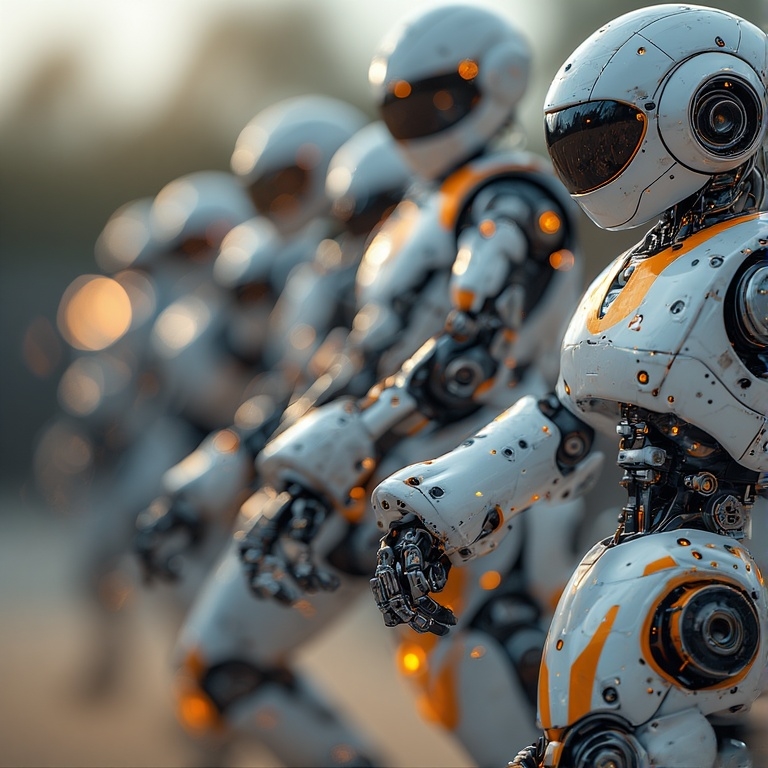
Is This Sport or Science? – A New Taxonomy of Competition
The World Humanoid Robot Games blurred traditional boundaries between athletic competition and scientific demonstration. Events like soccer, gymnastics, and relay races followed recognizable sports formats—complete with scoring systems, time trials, and audience engagement. Yet every movement, decision, and recovery was also a live experiment in robotics engineering, sensor integration, and AI autonomy.
Unlike conventional sports, where human physiology and psychology define the rules, WHRG events were shaped by mechanical constraints, algorithmic logic, and environmental adaptability. Judges didn’t just evaluate performance—they analyzed gait efficiency, decision latency, and sensor fusion accuracy. A robot’s fall wasn’t a failure—it was data. A successful jump wasn’t just impressive—it was a validation of torque modulation and joint calibration.
Even the crowd’s reactions reflected this dual identity. Spectators cheered for goals and dance routines, but also applauded recovery sequences, adaptive rerouting, and multilingual speech interaction. The excitement was rooted not in rivalry, but in revelation, every event was a public test of what machines can do, and how far they’ve come.
WHRG 2025 didn’t ask whether robotics belongs in sport or science—it demonstrated that the two are converging. The Games became a taxonomy of hybrid competition, where athletic formats serve as testbeds for engineering breakthroughs, and scientific inquiry is made legible through spectacle.
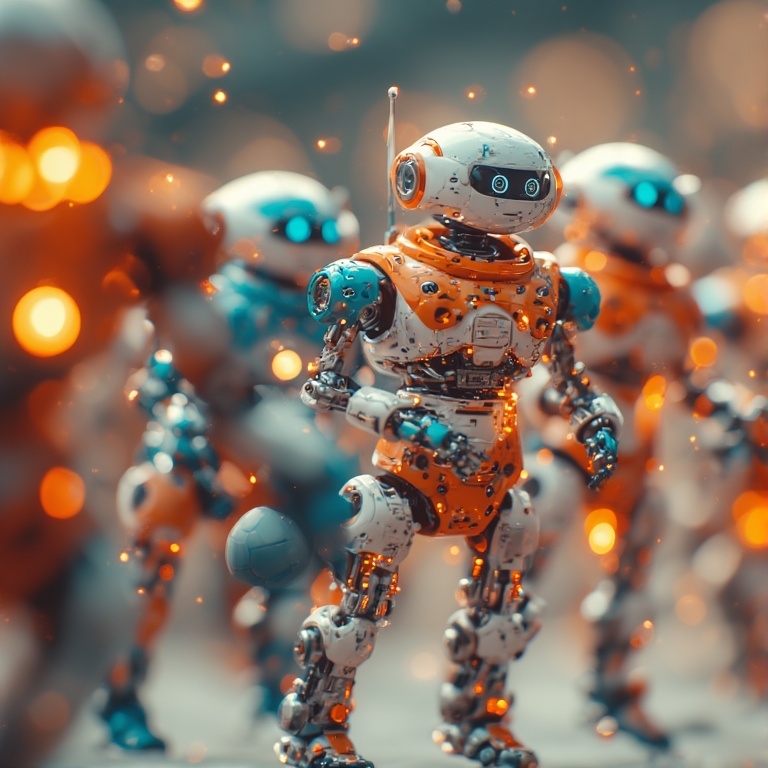
Soccer – Autonomous Team Play
One of the most anticipated events was robot soccer, featuring 3v3 and 5v5 matches. Robots operated autonomously, using onboard sensors, cameras, and AI algorithms to navigate the field, track the ball, and coordinate with teammates. The RoboCup Asia-Pacific Masters bracket drew 30 international teams and was considered the premier competition in humanoid football.
Highlights included successful goal scoring, coordinated passing, and fall recovery without human assistance. In one match, a robot striker scored after several attempts, causing the opposing goalkeeper to collapse dramatically. Another robot fell mid-play but stood up unassisted, demonstrating robust balance correction and motion recovery protocols.

Track and Field – Speed, Agility, and Terrain Adaptation
Track events included 100m, 400m, and 1500m races, as well as a 4x100m relay. Robots used inertial measurement units (IMUs), gait optimization algorithms, and terrain mapping to maintain speed and balance. The 100m obstacle race introduced dynamic challenges such as barriers and uneven surfaces, testing real-time adaptation and route planning.
The relay race was unique in allowing up to four teams to collaborate, each contributing one robot to the sequence. Baton handoffs required precise timing and inter-team coordination, emphasizing the complexity of multi-agent locomotion and shared control systems.
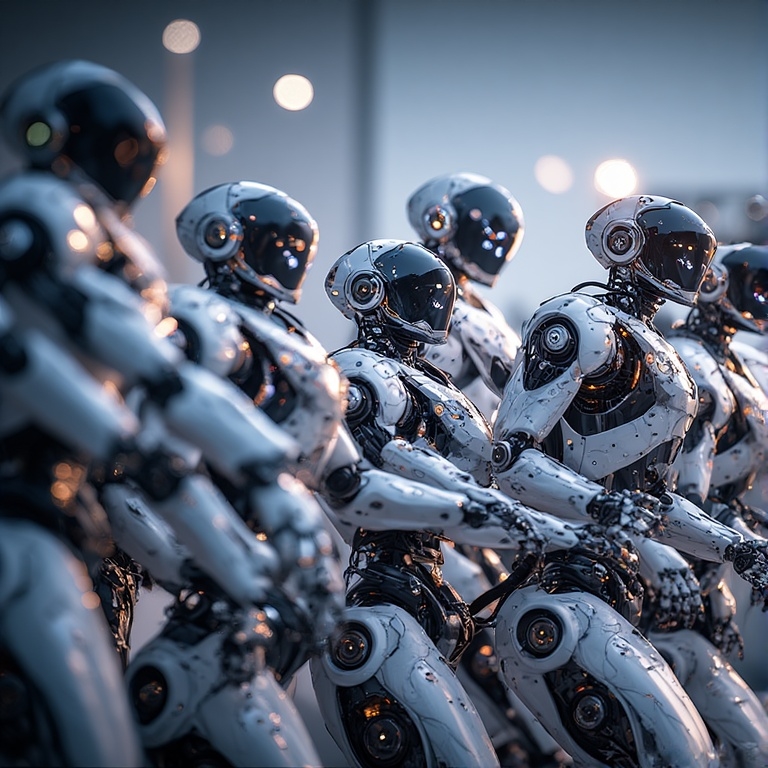
Martial Arts – Controlled Power and Expressive Form
Robots performed choreographed routines in Tai Chi and Wing Chun, showcasing controlled joint articulation, balance, and expressive fidelity. Movements were evaluated for timing, posture, and adherence to traditional forms. These performances demonstrated how robotic systems can replicate culturally significant gestures with mechanical precision and aesthetic sensitivity.
The martial arts segment was not just a technical showcase—it was a cultural bridge, integrating centuries-old movement traditions with modern robotics. Judges assessed not only execution but the expressive quality of each gesture, including breath pacing and stance transitions.
Freestyle Gymnastics – Dynamic Motion Control
Gymnastics routines included rolls, flips, and balance sequences. Robots relied on gyroscopes, accelerometers, and predictive motion planning to execute fluid movements and recover from instability. Scoring emphasized spatial awareness, kinetic elegance, and the ability to transition between poses without external correction.
One standout performance involved a robot executing a controlled somersault followed by a stable landing and pose hold. These routines required precise torque modulation across multiple joints and real-time feedback integration to maintain form under dynamic stress.
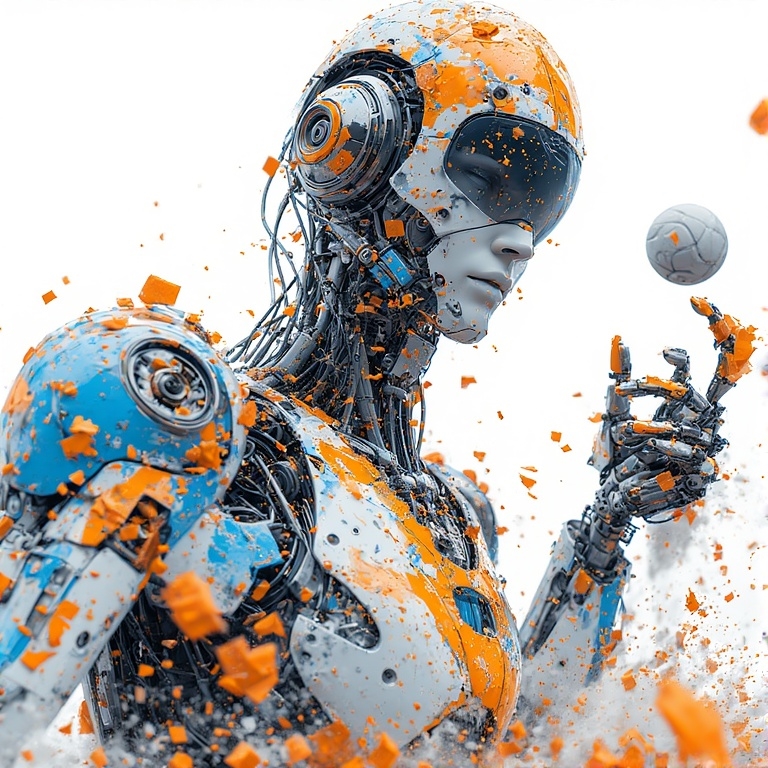
Fashion Modeling – Adaptive Gait and Expressive Locomotion
Robots walked runways alongside human models, wearing traditional Chinese costumes, contemporary fashion, and mythological attire. The challenge involved adaptive gait control, posture modulation, and facial expression rendering. One robot fell during its walk and was assisted offstage, underscoring the difficulty of terrain adaptation and the importance of fall recovery protocols.
Facial expression modules were used to simulate smiles, neutral gazes, and blinking, contributing to the realism of the presentation. Judges evaluated not only mechanical execution but the overall coherence of movement, costume integration, and audience engagement.
Group Dance – Multi-Robot Synchronization
In one of the most visually striking segments of the opening ceremony, teams of humanoid robots performed synchronized dance routines to music. These routines demonstrated real-time coordination across multiple units, with robots adjusting their timing and spacing dynamically. The choreography was pre-programmed but adapted live to tempo and spatial constraints using onboard motion controllers and inter-robot communication protocols.
The segment included miniature robots dressed in opera costumes performing alongside human acrobats. Movements such as single-leg stances and “spreading wings” poses were executed with precision, showcasing whole-body motion control and collaborative rhythm. This event highlighted the potential for multi-agent systems to operate in expressive, non-verbal domains.

Musical Performance – Instrumental Dexterity
Robots played keyboard, guitar, and drums during both the opening ceremony and designated performance showcases. These tasks required fine motor control, tempo tracking, and adaptive pressure sensitivity. Robots used servo-actuated fingers and real-time feedback loops to maintain rhythm and adjust dynamics.
One robot performed a solo keyboard piece while another accompanied on drums, demonstrating cross-modal synchronization. Judges evaluated performances based on timing accuracy, expressive variation, and the ability to maintain musical coherence across multiple instruments. These showcases emphasized the integration of mechanical precision with auditory responsiveness.
Combat – Freestyle Fighting Tournament
Freestyle combat events included boxing and obstacle-based sparring, with robots using vision systems to detect opponent movement and respond with programmed attack and defense sequences. The fighting tournament, hosted earlier in Hangzhou, was integrated into WHRG as a competitive bracket.
Robots demonstrated footwork, punch combinations, and evasive maneuvers using real-time motion planning and impact sensors. One match featured a robot executing a spinning strike followed by a defensive crouch, drawing applause for its fluidity and timing. Scoring focused on responsiveness, balance, and tactical variation under pressure.
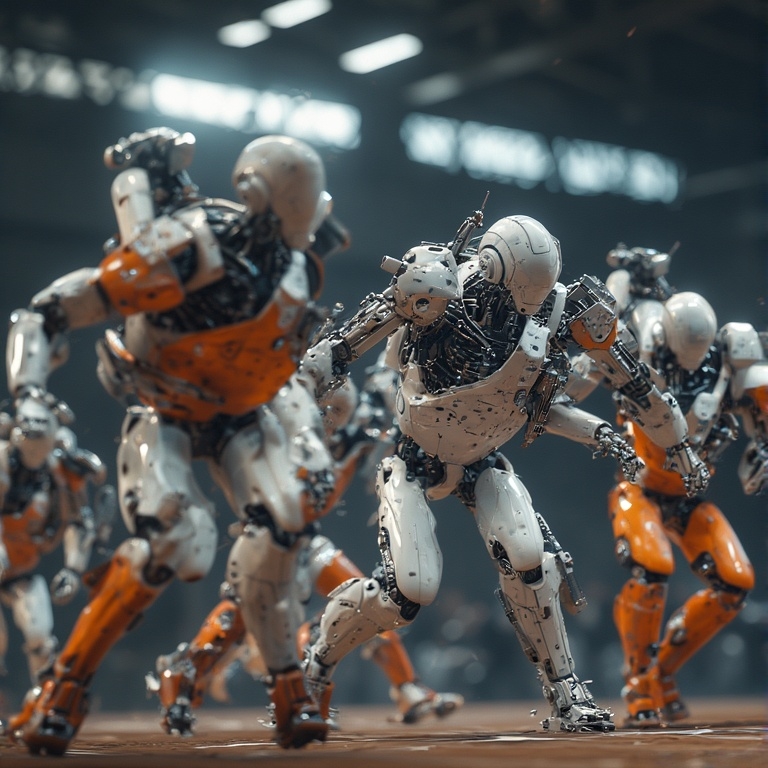
High Jump – Vertical Propulsion and Landing Control
In the high jump event, robots attempted vertical leaps over set bars, using leg compression algorithms and trajectory prediction to maximize height. Successful jumps required precise torque modulation and mid-air posture control. Landing stability was critical: robots had to absorb impact and maintain upright posture without external assistance.
One robot cleared the bar at a height of 1.2 meters, landing with minimal wobble and holding its pose for several seconds. Judges evaluated takeoff mechanics, mid-air control, and post-jump recovery, emphasizing biomechanical efficiency and structural resilience.
Hospitality Challenge – Service Robotics in Hotels
Robots were tasked with simulating hotel service roles, including greeting guests, collecting trash, and navigating indoor corridors. These tasks involved verbal interaction, object recognition, and route planning. Robots used speech synthesis to deliver scripted greetings and visual sensors to identify trash bins and furniture layouts.
In one scenario, a robot successfully identified a misplaced item on a table, picked it up, and deposited it in a designated bin. The challenge emphasized practical deployment of humanoid assistants in hospitality environments, testing both autonomy and social interaction protocols.
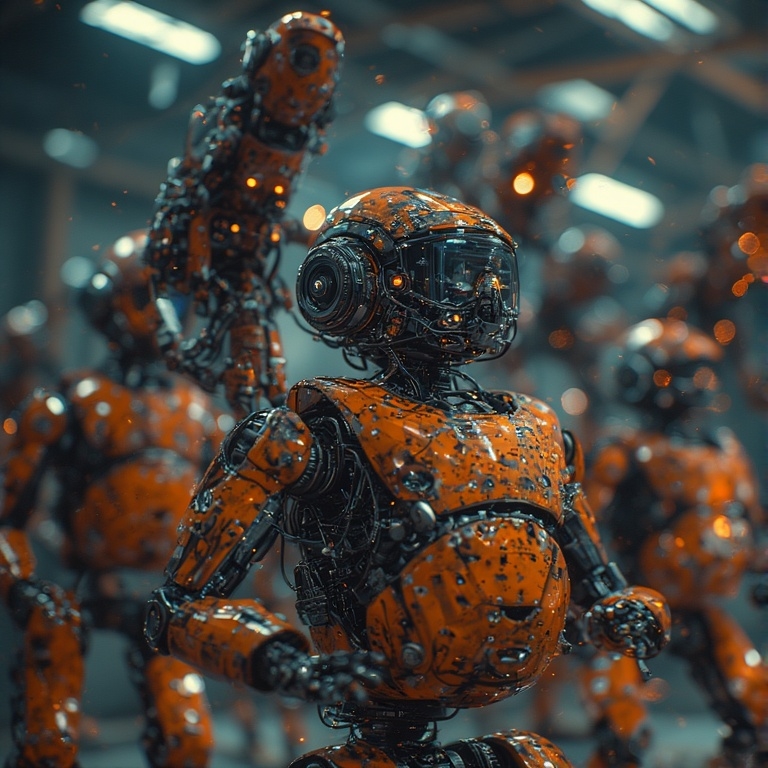
Hospital Logistics – Medical Sorting and Packaging
In a simulated hospital environment, robots were tasked with sorting medications and assembling prescription kits. Using high-resolution cameras and object classification algorithms, robots identified pill types, matched them to printed labels, and packaged them into containers with precision.
The challenge required fine motor control, error detection, and sterile handling protocols. One robot successfully completed a multi-step sorting task involving five different medications, demonstrating accurate label matching and contamination avoidance. This event showcased the potential of humanoid robots in pharmaceutical logistics and clinical support roles.
Industrial Sorting – Warehouse Simulation
Robots operated in a mock warehouse setting, sorting materials by type, weight, and destination. Tasks included identifying objects on conveyor belts, selecting appropriate bins, and executing placement with minimal error. Robots used depth sensors and tactile feedback to assess object dimensions and adjust grip strength accordingly.
Performance was measured by throughput rate, classification accuracy, and collision avoidance. In one trial, a robot sorted over 100 items in under 10 minutes with a 98% accuracy rate. This event emphasized real-world applicability in logistics, manufacturing, and supply chain automation.
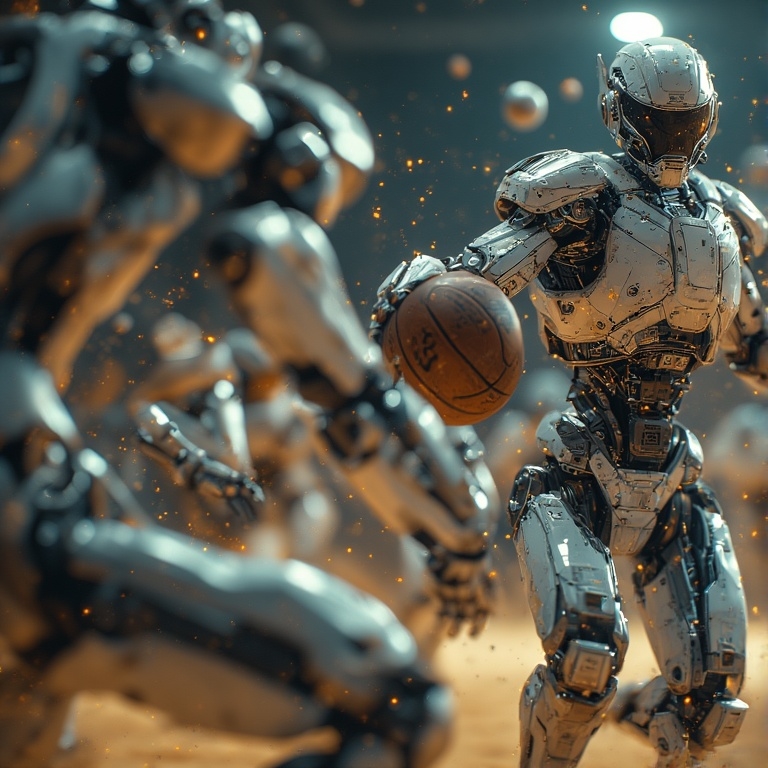
Relay Collaboration – Multi-Team Integration
The 4x100m relay was the only event that allowed cross-team collaboration. Up to four teams each contributed one robot to the relay sequence, requiring baton handoffs and synchronized pacing. Robots used IMUs and predictive gait algorithms to maintain speed and timing across transitions.
One relay team completed the course in under 90 seconds, with each baton handoff executed without human intervention. This event tested inter-team coordination, shared control protocols, and the ability to integrate disparate hardware platforms into a unified performance.
Teleoperation via 5G-A – Remote Control in Real Time
Several WHRG events featured teleoperated robots controlled via 5G-A (Advanced 5G) networks. Operators used VR headsets, motion gloves, and haptic feedback systems to guide robots through tasks such as cleaning, sorting, and guest interaction. The ultra-low latency of 5G-A enabled near-instantaneous response times, allowing for precise manipulation and environmental awareness.
In one demonstration, a robot was remotely operated from a different venue to complete a hotel cleaning task, navigating obstacles and responding to voice commands. This event highlighted the viability of telepresence robotics in service industries, disaster response, and remote caregiving.
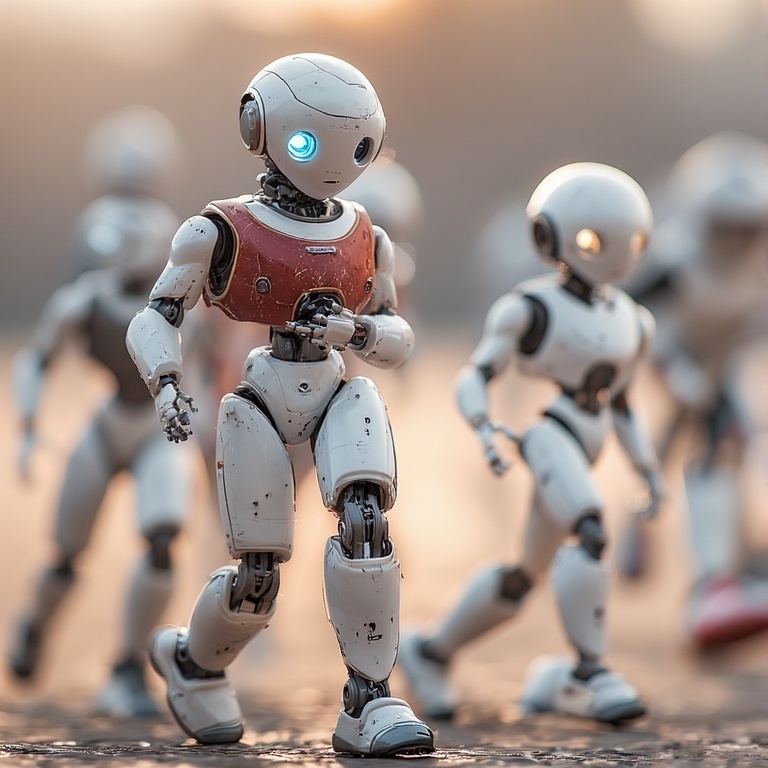
Vision and Perception – Object and Environment Recognition
Robots at WHRG were equipped with multi-modal vision systems, including RGB cameras, depth sensors, and LiDAR. These systems enabled real-time object recognition, facial detection, and spatial mapping. In hotel and hospital scenarios, robots identified trash bins, medication bottles, and human gestures with high accuracy.
One robot successfully navigated a cluttered room by dynamically updating its spatial map and rerouting around obstacles. Vision performance was evaluated based on recognition speed, classification accuracy, and environmental adaptability. This domain underscored the importance of perception in autonomous navigation and task execution.
Fall Recovery – Autonomous Stability Correction
Throughout WHRG, robots frequently encountered instability during dynamic events such as soccer, gymnastics, and runway modeling. A key performance metric was autonomous fall recovery: the ability to detect a fall, reorient limbs, and stand up without human assistance.
Robots used inertial measurement units (IMUs), accelerometers, and real-time motion planning to execute recovery sequences. One robot in the soccer bracket fell after a collision, paused to recalibrate its center of mass, and stood upright within 12 seconds. Judges evaluated recovery time, postural integrity, and the ability to resume task execution without external input. This capability is critical for deployment in unpredictable environments.
Speech Interaction – Multilingual Communication
Robots engaged in spoken dialogue with guests, judges, and operators using speech recognition and synthesis engines. Several robots supported multilingual interaction, including Mandarin, English, and Japanese. Tasks included greeting visitors, answering questions, and responding to verbal commands in service and hospitality scenarios.
Speech modules integrated natural language processing (NLP) with context-aware response systems. One robot successfully held a short conversation with a guest, offering directions and confirming room details. Evaluation criteria included pronunciation clarity, response relevance, and latency. These interactions demonstrated progress in human-robot communication and social interface design.
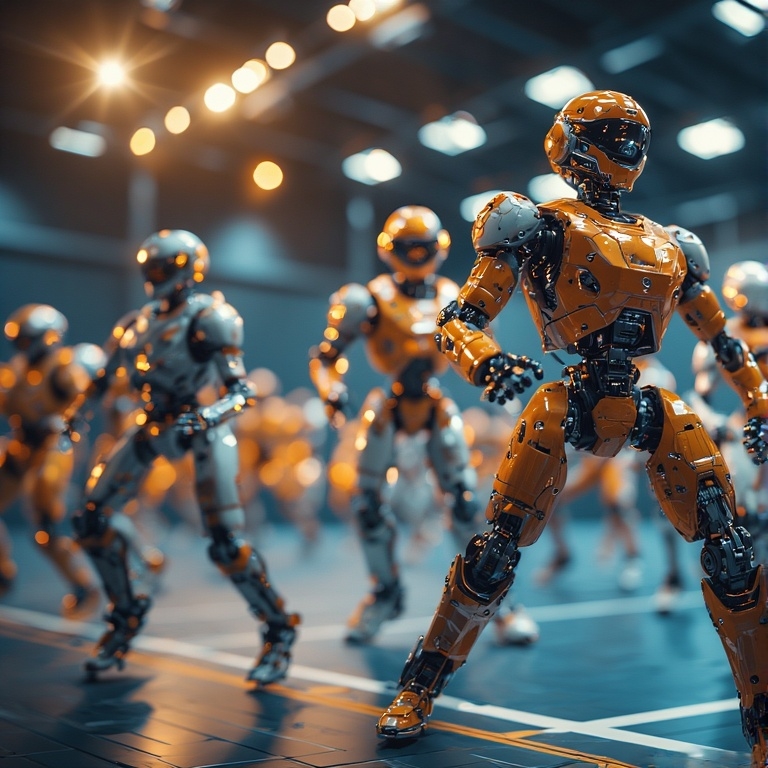
AI Decision-Making – Autonomous Task Execution
Robots at WHRG were required to make real-time decisions based on environmental input, task constraints, and performance goals. Whether navigating a corridor, choosing a sorting bin, or responding to a spoken command, robots used onboard AI to execute tasks without human intervention.
Decision-making systems combined rule-based logic with probabilistic models to handle uncertainty and adapt to changing conditions. In one hotel scenario, a robot detected a blocked path, recalculated its route, and completed its trash collection task without assistance. Judges assessed decision latency, task completion accuracy, and behavioral consistency.
Sensor Integration – Multimodal Feedback Systems
Robots integrated multiple sensor types—visual, auditory, tactile, and inertial—to interpret their surroundings and adjust behavior. Sensor fusion algorithms allowed robots to combine data streams for more accurate object detection, motion control, and human interaction.
For example, a robot performing martial arts used visual tracking to align with its opponent, tactile sensors to monitor contact pressure, and IMUs to maintain balance. This integration enabled nuanced responses and reduced error rates. WHRG emphasized sensor modularity and cross-domain feedback as essential components of robust humanoid design.
Motion Planning – Real-Time Path Optimization
Robots used motion planning algorithms to navigate complex spaces, avoid collisions, and optimize movement efficiency. In events like gymnastics, hotel service, and industrial sorting, path planning was essential for task completion under time constraints.
One robot in the warehouse simulation dynamically rerouted its path after detecting a misplaced bin, adjusting its trajectory without pausing. Techniques included trajectory prediction, inverse kinematics, and dynamic re-routing based on obstacle detection. Judges evaluated smoothness, energy efficiency, and task continuity.
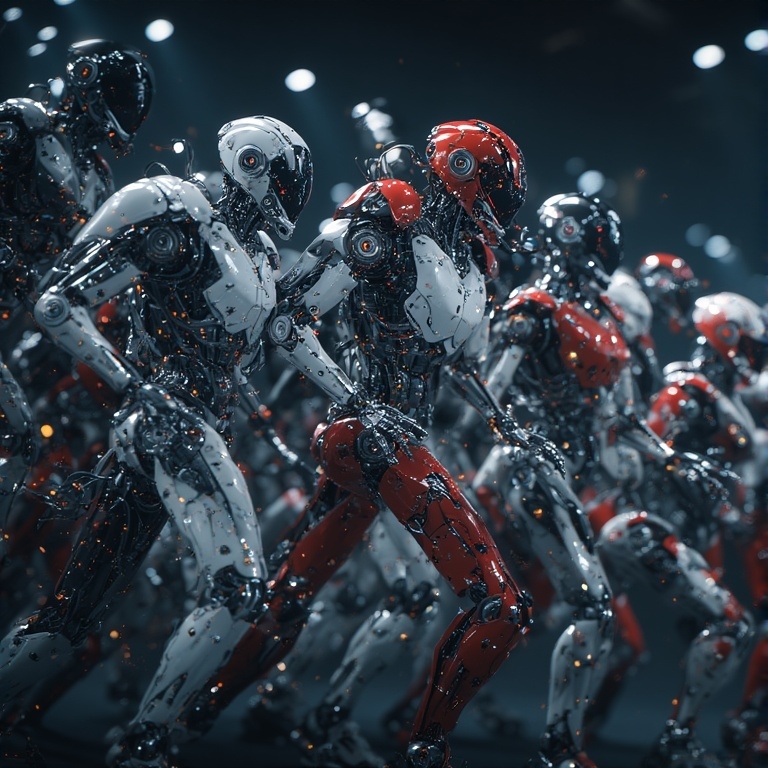
Battery Management – Power Efficiency Under Load
Robots at WHRG operated continuously across multiple events, requiring efficient battery usage and thermal regulation. High-load activities such as running, jumping, and musical performance placed significant demands on power systems. Teams monitored voltage levels, current draw, and heat dissipation in real time to prevent performance degradation.
Some robots used modular battery packs with active cooling systems, while others implemented power-saving algorithms that adjusted motor output based on task intensity. Battery life directly influenced event participation: robots with depleted power were withdrawn mid-event, underscoring the importance of energy optimization in competitive robotics.
International Team Composition – Cross-Border Collaboration
WHRG featured teams from 16 countries, including China, Japan, South Korea, Germany, Italy, and the United States. Many teams were composed of university-industry partnerships, combining academic research with commercial hardware platforms. Notable participants included Tsinghua University, Peking University, Shanghai Jiao Tong University, and Booster Robotics.
Cross-border collaboration was evident in shared software frameworks, joint training datasets, and co-developed control systems. Some teams used open-source platforms to accelerate development, while others customized proprietary modules for specific events. WHRG served as a global showcase for cooperative innovation in humanoid robotics.
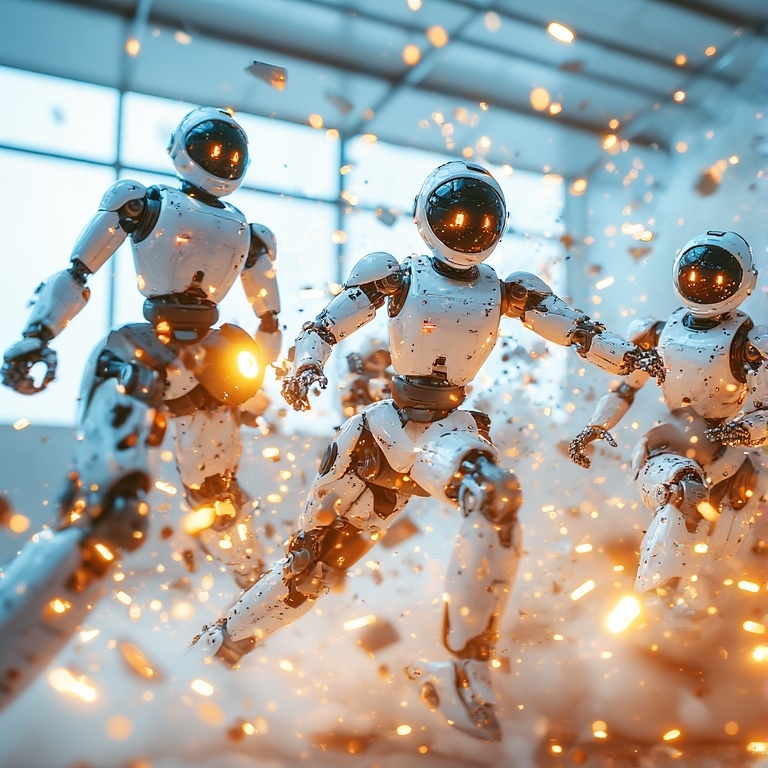
Hardware Platforms – Diversity in Design
Robots at WHRG varied widely in size, structure, and mechanical complexity. Some were full-scale humanoids with articulated limbs and facial modules; others were compact units optimized for speed and agility. Hardware platforms included aluminum alloy frames, carbon fiber joints, and servo-driven actuators.
Booster Robotics supplied platforms for dozens of teams, offering modular designs that could be adapted for athletic, service, or performance tasks. Teams customized limb lengths, joint torque profiles, and sensor arrays to match event requirements. The diversity of hardware reflected the evolving taxonomy of humanoid design.
Environmental Adaptation – Real-World Deployment Readiness
Events like The World Humanoid Robot Games are and were staged in realistic environments: hotel rooms, hospital wards, warehouse floors, and public performance spaces. Robots had to adapt to variable lighting, uneven surfaces, and unpredictable human movement. Environmental adaptation was a key scoring metric across all scenario-based challenges.
In one hotel simulation, a robot navigated around a moving crowd, adjusted its route to avoid a cleaning cart, and completed its trash collection task without incident. These performances demonstrated readiness for deployment in semi-structured public spaces, where autonomy and adaptability are essential.

Conclusion – Engineering Meets Execution
The 2025 World Humanoid Robot Games marked a turning point in public robotics. By combining athleticism, service functionality, and expressive performance, WHRG demonstrated how humanoid robots are transitioning from experimental platforms to real-world collaborators. Every event—from soccer to sorting—was a test of autonomy, adaptability, and integration.
Rather than showcasing speculative futures, The World Humanoid Robot Games grounded its vision in engineering reality. It was a celebration of what robots can do now—and a challenge to push further. The Games proved that humanoid robotics is no longer a laboratory curiosity—it is a field ready for public scrutiny, global competition, and societal integration.
Join the Discussion – What Should Robots Compete In Next?
If you were designing the next The World Humanoid Robot Games event, what would you test? Real-time translation? Urban navigation? Emergency triage?
What domains of human life are ready for robotic collaboration—and which ones still require the unpredictable nuance of human judgment?
Hashtags
#WorldHumanoidRobotGames #WHRG2025 #HumanoidRobotics #AIInMotion #RoboticsCompetition #AutonomousSystems #ServiceRobots #RobotAthletes #RealWorldAI #EngineeringExcellence #GlobalRobotics #TelepresenceRobots #MultimodalSensors #MotionPlanning #RobotRecovery #HumanRobotInteraction
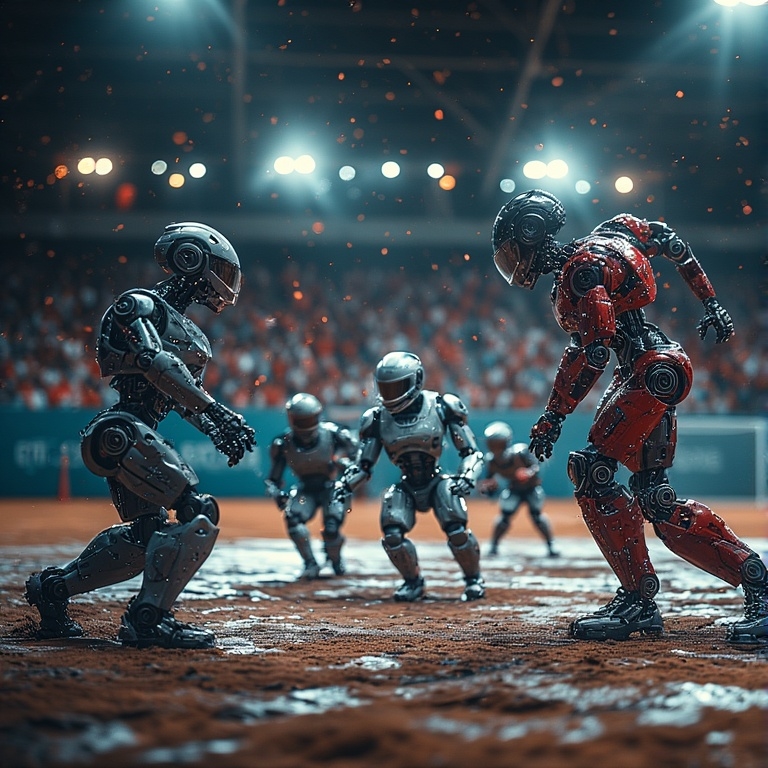










The Digital Age – Humanity’s Great Interface Shift From 2025
[…] systems we build today will shape the moral, ecological, and cognitive landscapes of tomorrow. The challenge is not simply to adapt to digital technologies, but to shape them with wisdom, […]